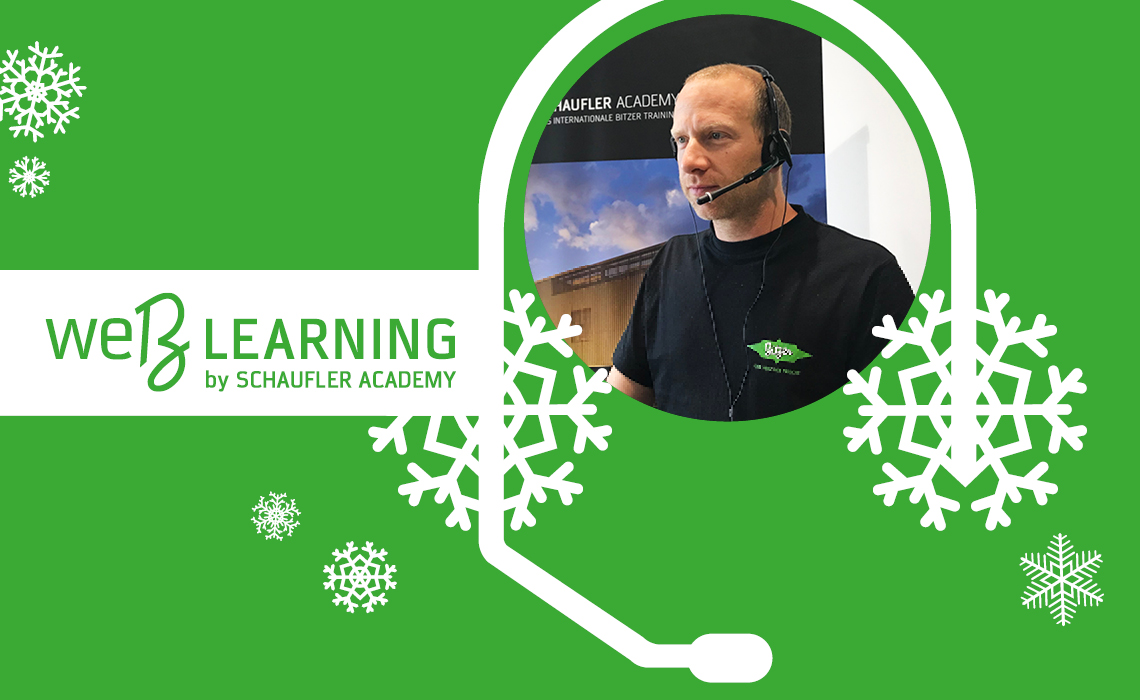For several months now, the SCHAUFLER Academy has unfortunately not been able to conduct any more attendance events. Now webinars are the method of choice – and many of them are held by you. Did you have any experience with this in advance?
In the past years, I have conducted about 70 two-day classroom training sessions for BITZER, each with five to ten participants. But not one single webinar. So no, this was also new territory for me and definitely a change.
As a speaker, how do you perceive the differences between online and face-to-face seminars?
On the one hand there is the noticeable distance to the audience. A clearly noticeable difference is also the time factor: our face-to-face trainings last two full days, one day of which is devoted to theory and one to practice. As a speaker, you are flexible enough to address specific topics and interests requested by a group or individual participants. As a result, our face-to-face trainings are often very lively with mutual exchange and discussions with and between the participants. Our webinars with 30 minutes of presentation time followed by a question-answer session – with written questions – are of course a contrast to this. With up to 200 participants, however, we also have a much larger audience here; whereas a maximum of ten people can take part in the face-to-face trainings.
The questions in the webinars are more varied and often asked in a more general way. In a webinar, for example, the presentation was 30 minutes long and the subsequent session lasted 45 minutes with 47 questions of various kinds. This is due to the fact that the webinars tend to be attended by more people who are completely new to the field of CO2 applications. And probably the anonymity in the chatroom of a webinar also helps to ask more or different questions than in the face-to-face sessions.
Did you get used to the new situation quickly?
Yes, after a few webinars a kind of routine in dealing with the new situation kicked in. After several webinars, you will become more confident in the course of events and in particular the interaction with the moderator in interpreting and answering the numerous questions and formulating the best possible answers will be brought to perfection. Over time, you become more and more confident and I am sure that this also has a positive influence on the participants’ perception of the contents and messages of the webinars.
What feedback do you get from the participants?
We receive extremely positive feedback, including suggestions and requests on specific topics from our customers. This is a great confirmation of this format for us!
You run webinars on CO2 topics – what is it that fascinates you about CO2?
CO2 has some thermodynamic and physical properties that I find very interesting. In addition, it can be used for many different applications and resulting plant configurations. Although the vast majority of CO2 applications is still found in supermarket refrigeration, CO2 is also used, for example, in low temperature applications and high temperature heat pumps. We are also observing a growing interest in using CO2 for the air conditioning of buses and trains. These systems are usually reversible and can therefore be used for cooling and heating. Quite versatile, isn’t it?



L’Académie SCHAUFLER propose des webinaires en anglais: https://trainings-events.bitzer.de/WebinarEN Des webinaires en français sont déjà en préparation. En novembre, nous devrions commencer.
Si vous avez des séminaires par Webinars, je vous prie de me contacter.